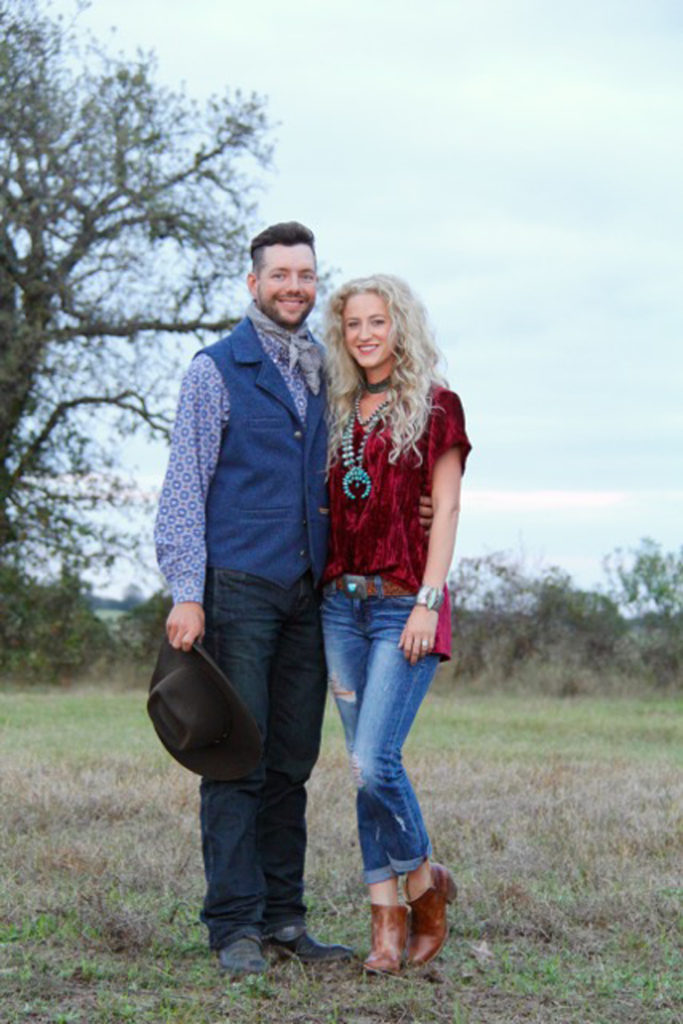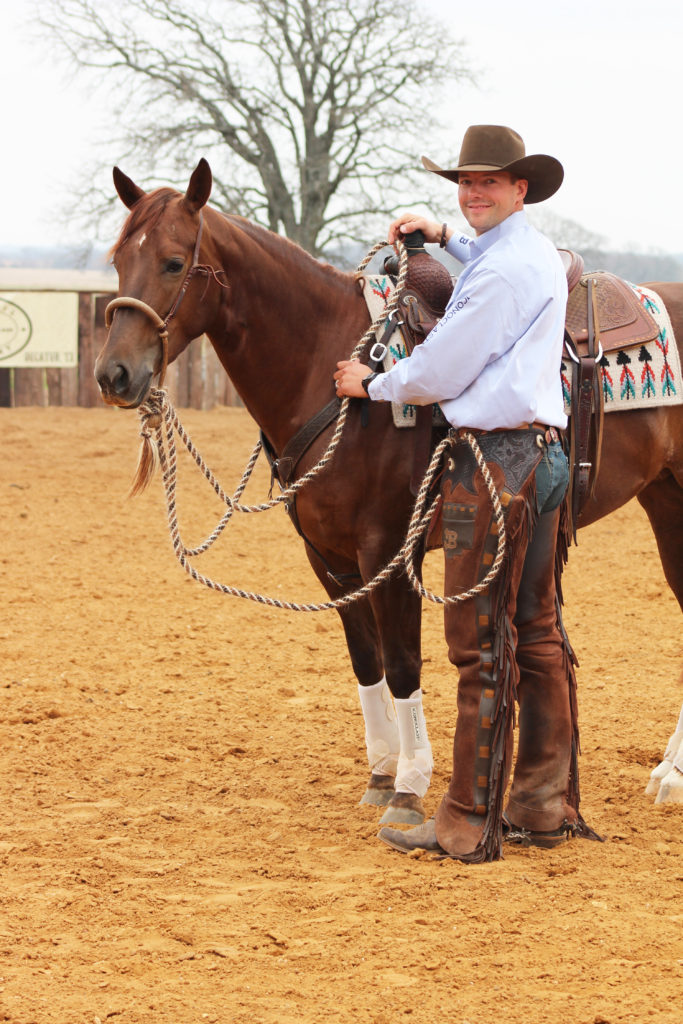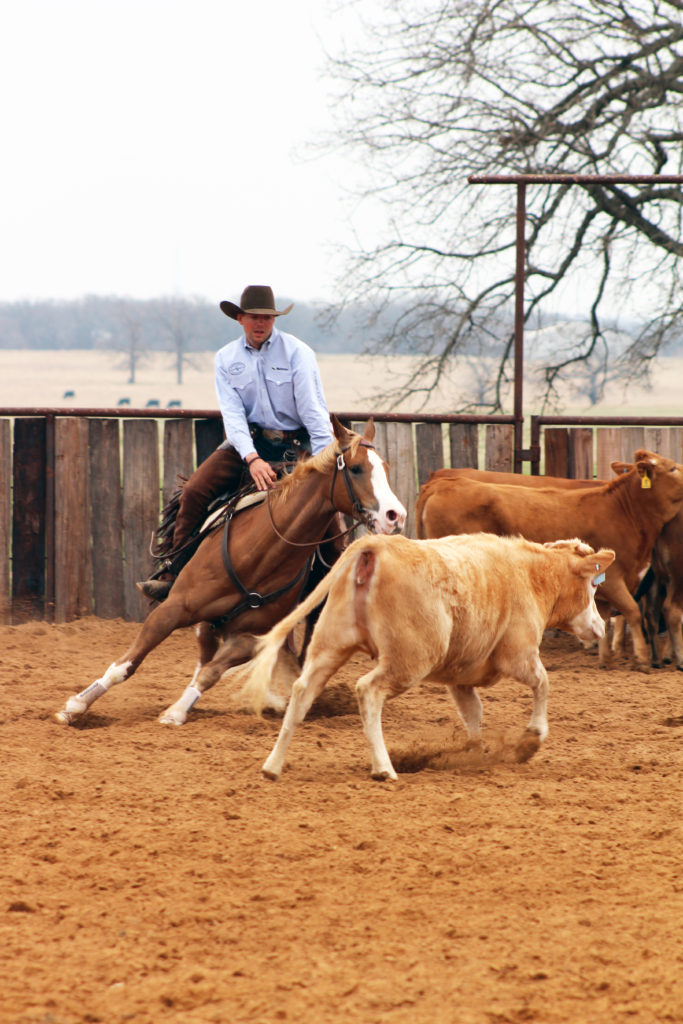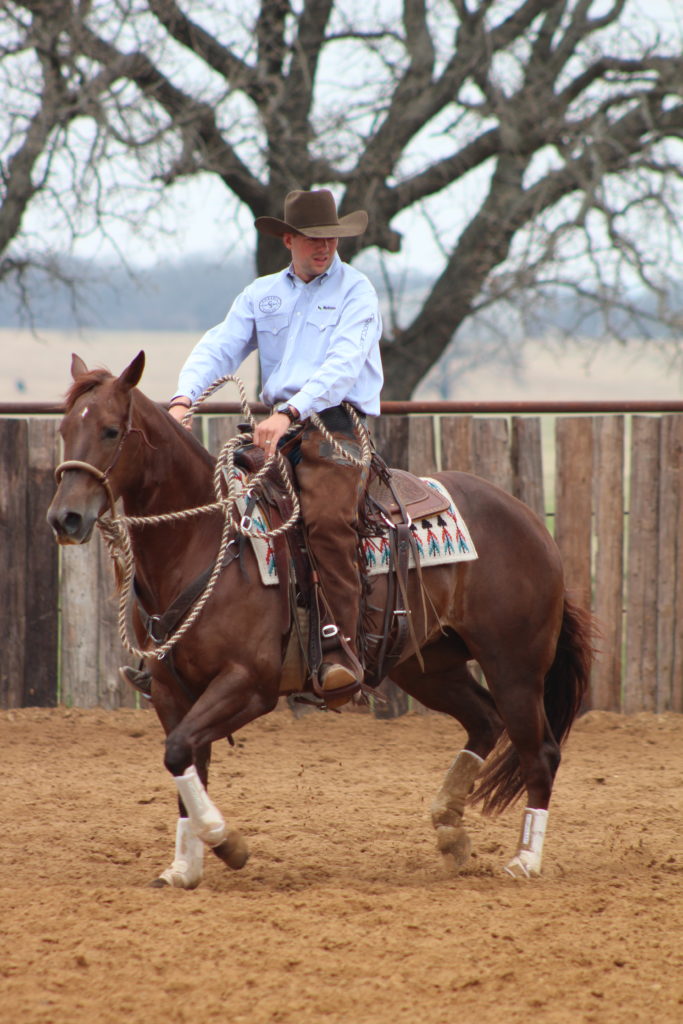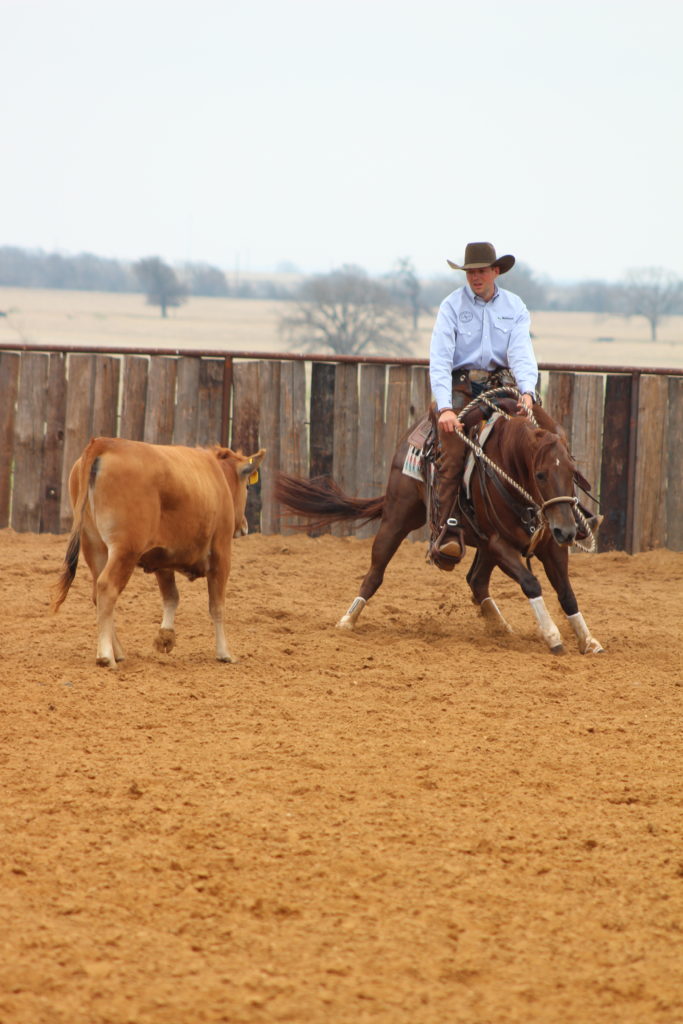Country Lifestyles
April 2017 Profile – Ben Baldus : Setting Specific Goals
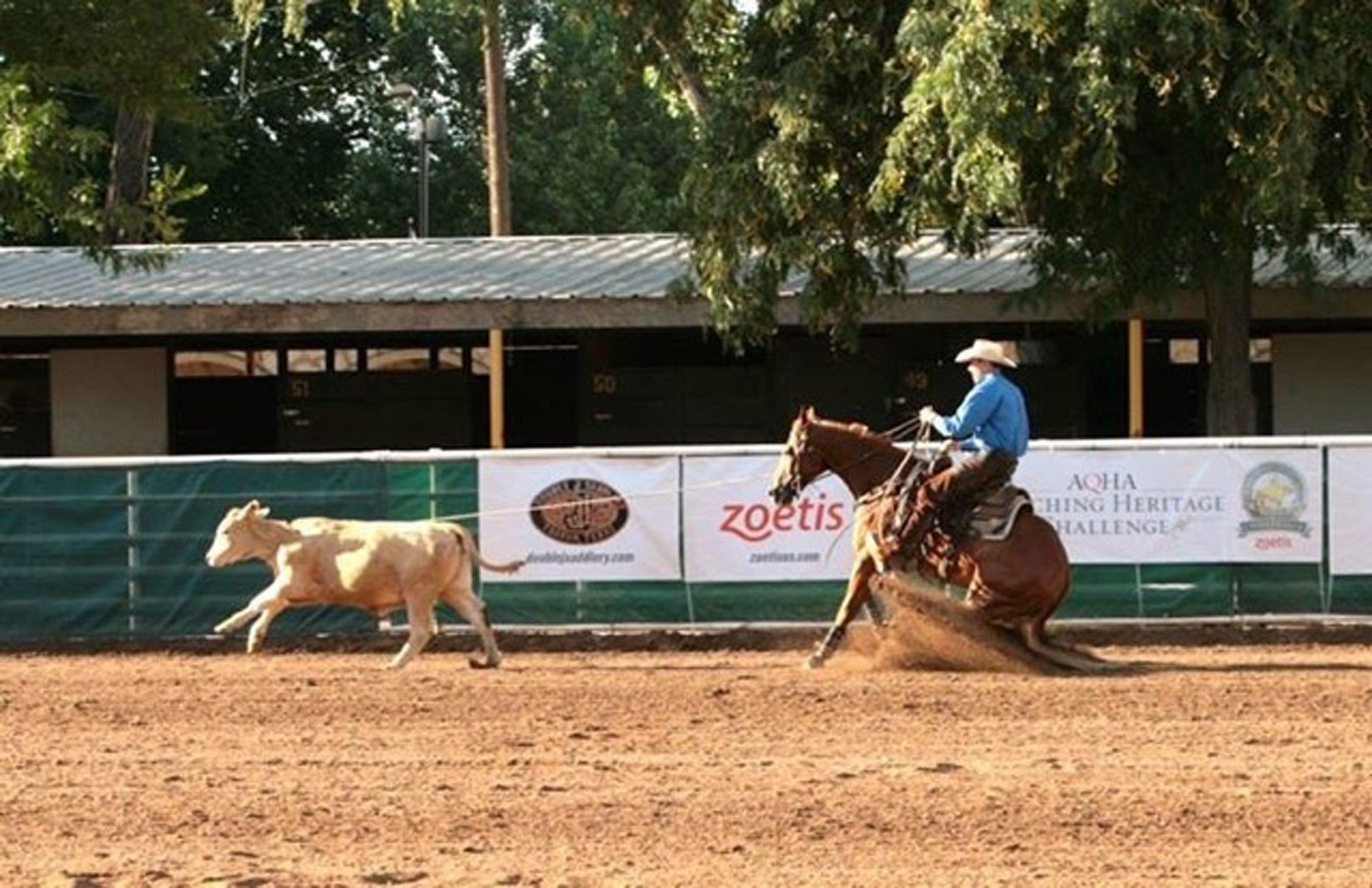
By Jessica Crabtree
In the southwest region of Michigan is the town of Paw Paw. “Town so nice, they named it twice,” former resident Ben Baldus said laughing. Named after the Indian tribe, Paw Paw Indians, Michigan is not readily known for its Native American Culture. It was there that Baldus and his brother and sister were born and raised, “My family was in farming. My grandpa on both sides farmed, had cows, hogs and horses.” As a youth, Baldus was brought up in a rural setting and introduced to 4-H. “I got involved in 4-H and loved it! It was a family-oriented lifestyle. I even was 4-H president once,” Baldus recalled.
Early on Baldus became interested in horses and less engaged in farming, “The older I got, I liked driving tractors less and less.” Baldus had the foresight that if he one day would be a cowboy and ride horses, he needed to learn from renowned horse trainers such as John Lyons and Monty Roberts, “My parents were helpful getting me into horses. I got VHS tapes of both trainers and clinicians, John Lyons and Monty Roberts. I watched them over and over, learning all I could from them,” Baldus explained. At the young age of 12, Baldus’ parents allowed the young boy to start riding horses for the public. “My dad helped me set up a round pen with lights, and I rode after school.”
That following year, a pivotal occurrence happened. Monty Roberts traveled to the Michigan State Fair. “He was the clinician at the fair. My parents took me to see him. It was a neat experience to watch him, then meet him,” Baldus said. At the time Baldus remembers either wanting to train horses or be a cowboy and ride bulls.
His decision was training horses, a better incentive of stable money. Seeing their son studied horsemanship and training methods, Baldus’ parents leased their son his first show horse when he was 14. “I started showing the horse in 4-H horse programs,” he said. By 16 Baldus was working for a trainer in Michigan, cleaning stalls in exchange for lessons.
To read more pick up a copy of the April 2017 NTFR issue. To subscribe call 940-872-5922.
Country Lifestyles
While We Were Sleeping
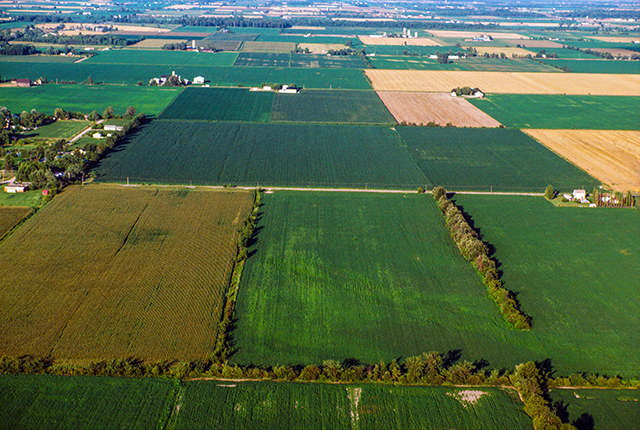
By Martha Crump
That old adage, “What you don’t know won’t hurt you.,” may have some basis in truth when applied to minor situations. However, when what you don’t know is presented in the form of a “Trojan Horse” and is what amounts to an incredible attempt to fleece American property rights, it becomes a different story altogether.
To put this unbelievable tale together, we need to step back to Joe Biden’s 2021 Executive Order which pledged commitment to help restore balance on public lands and waters, to create jobs, and to provide a path to align the management of America’s public lands and waters with our nation’s climate, conservation, and clean energy goals.
To read more, pick up a copy of the April issue of NTFR magazine. To subscribe by mail, call 940-872-5922.
Country Lifestyles
Lacey’s Pantry: Strawberry Sorbet

By Lacey Vilhauer
Ingredients:
1 whole lemon, seeded and roughly chopped
2 cups sugar
2 pounds strawberries, hulled
Juice of 1 to 2 lemons
¼ cup water
Directions:
Place the chopped lemon and sugar in a food processor and pulse until combined. Transfer to a large bowl. Puree the strawberries in a food processor and add to the lemon mixture along with juice of one lemon and water. Taste and add more juice as desired.
To read more, pick up a copy of the April issue of NTFR magazine. To subscribe by mail, call 940-872-5922.
Country Lifestyles
A Mountain Out of a Molehill

By Nicholas Waters
As winter plods along – come Spring and gopher mounds – homeowners and farmers find themselves playing a familiar song – fiddling while Rome is burning.
Let’s make a mountain out of a molehill. Those mounds on your lawn and pasture could be moles, but they’re more than likely gophers; Plains Pocket Gophers to be pragmatic – Geomys bursarius to be scientific.
These rodents dig and chew, and the damage they can do goes beyond the mounds we mow over. Iowa State University cited a study in Nebraska showing a 35 percent loss in irrigated alfalfa fields due to the presence of pocket gophers; the number jumped to 46 percent in decreased production of non-irrigated alfalfa fields.
The internet is replete with academic research from coast-to-coast on how to curtail gopher populations, or at least control them. Kansas State University – then called Kansas State Agricultural College – also published a book [Bulletin 152] in February 1908 focused exclusively on the pocket gopher.
To read more, pick up a copy of the April issue of NTFR magazine. To subscribe by mail, call 940-872-5922.
-

 Country Lifestyles1 year ago
Country Lifestyles1 year agoScott & Stacey Schumacher: A Growth Mindset
-

 Equine7 months ago
Equine7 months agoThe Will to Win
-

 Country Lifestyles7 years ago
Country Lifestyles7 years agoStyle Your Profile – What your style cowboy hat says about you and new trends in 2017
-

 Country Lifestyles4 years ago
Country Lifestyles4 years agoAmber Crawford, Breakaway Roper
-

 HOME7 years ago
HOME7 years agoGrazing North Texas – Wilman Lovegrass
-

 Country Lifestyles7 years ago
Country Lifestyles7 years agoDecember 2016 Profile, Rusty Riddle – The Riddle Way
-

 Country Lifestyles8 years ago
Country Lifestyles8 years agoJune 2016 Profile – The man behind the mic: Bob Tallman
-

 Outdoor9 years ago
Outdoor9 years agoButtercup or Primrose?

